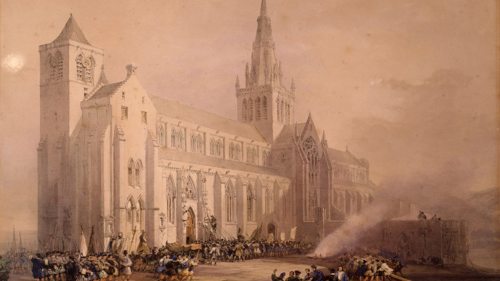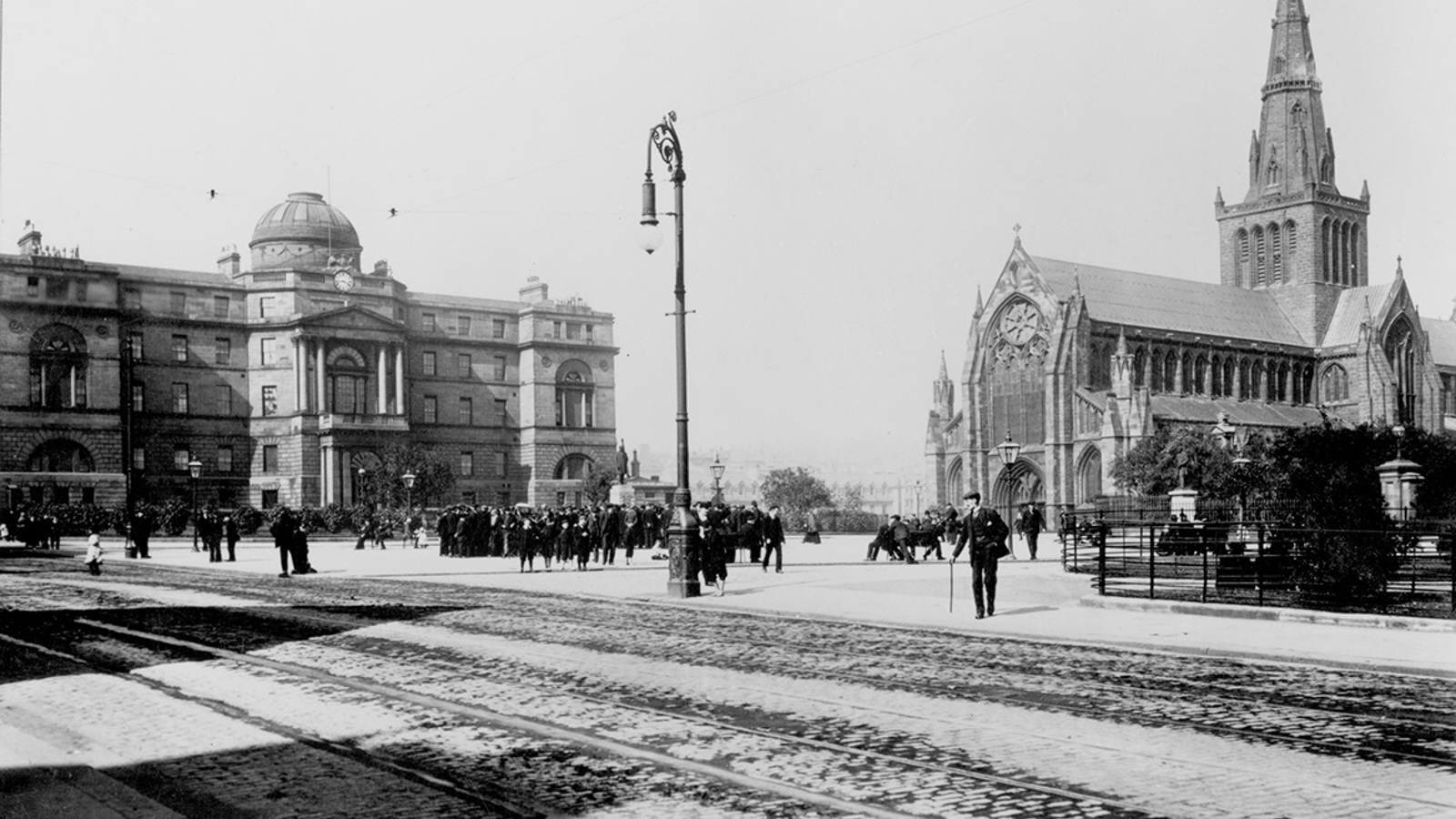Glasgow Cathedral - Times Past

In partnership with the Glasgow Times, our archivists are exploring Glasgow's fascinating history. This week, Irene O'Brien writes about Glasgow Cathedral.
Glasgow Cathedral is one of Scotland's most magnificent medieval buildings, and the only cathedral on the Scottish mainland to survive the Protestant Reformation almost intact.
The Cathedral building dates mostly from the 1200s and parts of it are older still. It was dedicated to St Kentigern or St Mungo, who is credited with founding Glasgow. He was its first bishop and, of course, he is Glasgow’s patron saint. The Cathedral is reputedly built on the site of St Mungo's original church, founded in the 6th century on the banks of the Molendinar Burn, and was constructed over the spot where he was buried in around 612.
The impetus for the building of the Cathedral was the decision in c.1115 by David Prince of Cumbria (later King of Scotland) to reinstate the Diocese of Glasgow which made Glasgow an episcopal centre of an enormous diocese. The new cathedral at Glasgow was first consecrated in 1136 in the presence of the now King David I and his court.
It was reconsecrated in 1197 after a fire when a new cathedral was built, of which a single vaulting shaft in the south aisle of the lower church is all that survives today. Bishop Jocelin was responsible for overseeing its reconstruction. He collected funds and commissioned a monk, Jocelin of Furness, to write a biography of St Mungo to generate enthusiasm for Glasgow's patron saint and for the task of enlarging his church. The work resulted in a partially completed choir, new nave, and transepts. The Cathedral was consecrated in July 1197.
Papal bulls in 1161 and 1211 required adult residents from the diocese to make annual pilgrimage to the shrine of St Mungo making Glasgow and its Cathedral a centre for pilgrims. In King Edward I of England worshipped at St Mungo’ shrine and tomb. Very unusually for a Cathedral, it was also the parish church for the town’s inhabitants.
The building was continually in the process of reconstruction, extension, and repair throughout medieval times. Building work was carried out in the mid-13th and 14th centuries, culminating at the end of the 14th century, when much of the nave and transept was built.
Even more extensive building work came about during the period of Bishop Glendinning (1387-1408) after the cathedral was struck by lightning in 1400. The cathedral’s original wooden spire was burned down, and a stone replacement was begun a few years later by Bishop Lauder and completed by his successor John Cameron. A new shrine of gold or silver was built to house Kentigern’s relics. In 1460 a new altar to St Kentigern was built and between 1470-1520 side altars were added.
In 1560 the Scottish Reformation saw Archbishop Beaton escaped to Paris taking the diocesan, city, and university archives with him. All the Catholic furnishings such as altars and sculpture were removed, and the roof was apparently stripped of lead. The building was retained for Protestant worship, and in 1562 David Wemyss, became the first Protestant minister of Glasgow Cathedral.
The fabric of the cathedral suffered from vandalism and plunder, and by 1574 it was in sufficiently bad condition to attract the attention of the Glasgow town council. The tradition is that Glasgow Trades House defended the cathedral from further damage, enabling it to survive the Reformation relatively unscathed.

